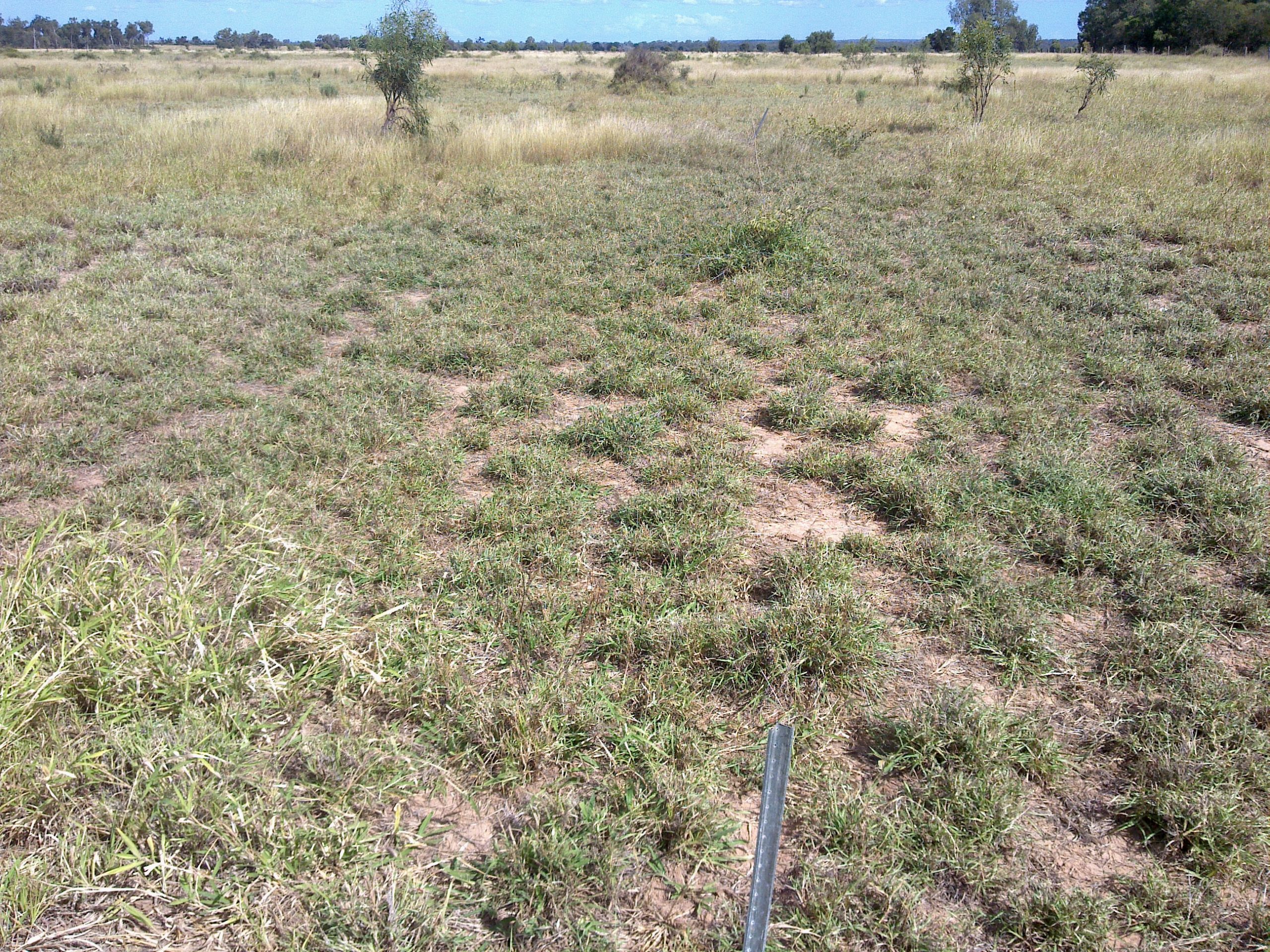Pasture dieback or pasture rundown?
Pasture rundown is the reduction of pasture growth over time due to the tie-up of soil nutrients (primarily nitrogen) in sown pastures. Pasture quantity and quality gradually reduces over time, however plants remain alive, and large areas can be uniformly affected, for example, whole paddocks, properties and districts.
Conversely, pasture dieback is expressed as unthrifty or dead patches throughout relatively well grown pasture. In more severe cases whole paddocks can be affected. These patches can occur very quickly – for example, during one summer season. Plants in these patches die, and dead areas can be subsequently colonised by broadleaf plants (weeds or legumes).
 |  |
| Left: Buffel grass pasture affected by rundown. Note the low biomass of the buffel grass and the prevalence of other grass species, especially Indian couch, towards the back of the photo. | Right: Buffel grass pasture affected by dieback. Note the dead patch (left of photo) surrounded by well-grown buffel grass without any other grass species. |
Related articles
Sown pasture rundown 1: The productivity decline of sown pastures over time →
Sown pasture rundown 2: Strategies to increase nitrogen inputs →
Sown pasture rundown 3: Strategies to increase nitrogen cycling →